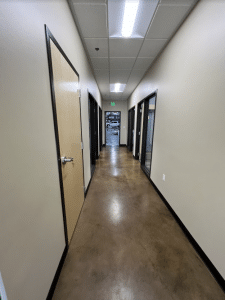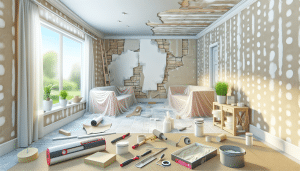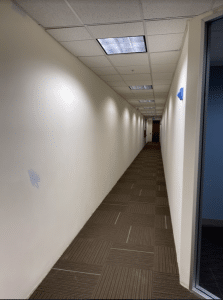Water damages can be a lot more severe than you can imagine. If there has been a pipe leak or flooding in your home, drying everything is just not enough. Water can seep into any surface without you knowing, only to cause severe damages later on. Apart from drying the floors, you must pay attention to even the slightest signs of water-related damage anywhere in your house.
Drywall is one of the building components of your house that can get affected by water the most. While it may seem to be alright right now, it might develop signs of water damage later. If your drywall has started to show signs of water damage, you need to pull up your socks fast and do something about it before the problem gets out of hand. Below is a list of things that can help you deal with water-damaged drywall efficiently.
Contents
1. Use Proper Safety Gear and Take Safety Precautions
Make sure you’re equipped with property safety gear before you start working on water-damaged drywall. If your drywall was installed several years ago, the chances that the joint material includes asbestos are high. You should wear respiratory protection to keep yourself inhaling any harmful chemical dust. Moreover, you should wear gloves to ensure you don’t cut yourself during the process. Moreover, if there are any electrical points around, you’ve to ensure that the circuit breakers have been switched off beforehand.
2. Remove the Damaged Drywall
You don’t necessarily have to remove all the drywall panels. You only have to remove the panels that have been damaged by water, and that too, not entirely. For example, if there was flooding in your house and about 2.5 feet of drywall is damaged, you need to remove the affected panel up to 4 feet, only to ensure that any part where water may have traveled to is also removed. Simply mark the level on the drywall that needs to be cut using chalk and use a regular knife to cut the damaged part of the drywall panel.
3. Dry All the Surrounding Area
Just removing the water-damaged drywall is not enough. You need to ensure that all the surrounding area is thoroughly dry. If it’s not, the underlying moisture will affect the newly installed drywall as well. It’s better to hire drywall professionals for this job, as this part of the job requires efficient blowers, which you may not have in possession. Professional drywall contractors are equipped with all the necessary equipment and tools that are needed to deal with water-damaged drywall.
4. Sanitize the Area Before Installing New Drywall
One of the biggest threats that moisture poses is the development of mold. Therefore, you must sanitize the entire area, both the area that was under the damaged drywall panel and the area around it, to ensure no mold formation occurs.
5. Paint the New Drywall
Once the new drywall panel is installed, you need to paint the entire panel. Paint will serve as a seal coat for the joint and will also provide a uniform and neat appearance.
Summary
Dealing with water-damaged drywall can get tricky, and hence it’s better to hire reliable drywall professionals for doing the job right.




